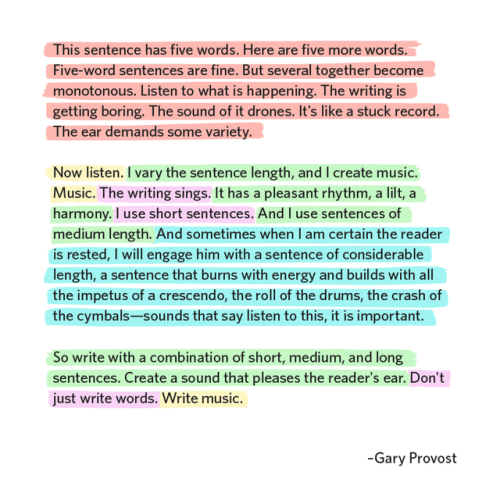What Is Showing Vs. Telling Anyway?
What Is Showing vs. Telling Anyway?
When I decided to get serious about writing, I wrote short stories that meant something to me. Then I let people read them, but not just anyone. I picked people who knew a thing or two about craft. English teachers, the adults in my life who recommended books to me, and a lady who became a beloved writing tutor.
Those people challenged things like my sentence structure and word choices, but my writing tutor told me to show my stories, not to tell them.
I bristled. I was already showing them! That’s creative writing! If I wanted to tell my stories, I’d just say them out loud.
She clarified—in words that flew right over my head. My brain fuzzed out and I couldn’t grasp what she was saying, but I was embarrassed, so I nodded like I understood. It took me a while longer to get the hang of things by writing more (some terrible, some good) stories where I played around with my descriptions, narration, word choices, and themes.
Finally, years later, I understood.
Showing is describing the sensory details of your story. It’s diving into the emotional depth of your characters. It’s making the reader feel like they’re watching a movie while they’re reading your work.
Telling is more like narration. There’s no flowery language or sensory descriptions. It’s straightforward, clean, and nearly professional in nature.
Why Is “Telling” Normally a Bad Thing?
Clean-cut narration isn’t always terrible. Sometimes it works well for stories told by a narrator with dry humor or books about an intensely serious subject.
Most of the time though, “telling” keeps readers at arms-length. Picture yourself reading a history book. Each page gives you the facts. It might also describe a historical figure or the gory details of a war, but making those people or moments come to life in your mind isn’t the point of the text. It’s to convey information.
That’s what makes stories that rely on “telling” so different from stories that “show” everything.
Examples of Telling
If you’re like me, you’re probably thinking that it would be easier to picture the difference between these two concepts if there were examples. Lucky for you, I’ve already thought of that.
Example 1: I’m happy to see my best friend at school.
The narrator conveys their emotion, but not what that emotion makes them feel. There’s nothing to paint a picture of the school or even the friend.
Example 2: Henry didn’t like his dinner.
Cool, the character didn’t enjoy their food. Why? What was the taste or texture like? What did he experience that made him recognize the feeling of not enjoying the meal?
Example 3: Sofia made her bed in a hurry.
Why she was in a hurry might come in the next sentence or paragraph, but what did she feel while making that bed? What was her thought process? What’s her room like?
Examples of Showing
Let’s turn those same examples into sentences that “show.”
Example 1: I walk through the clustered school hallways with the rest of the student body, smelling their pre-exam nervous sweat and too much men’s body spray. This school would be miserable, except for my best friend. When I spot her by my dented locker, the smile on her face makes the cold bus ride to school worth it.
This is obviously more than a sentence, but notice how you get a better experience from it. The school hallways are crowded and smell bad. The protagonist doesn’t enjoy where they attend class. However, their best friend is a source of happiness. She waits by a dented metal locker, possibly with some good news, encouragement or an exciting update to something happening in the protagonist’s life. It makes you want to know what she’s going to say, especially because you can relate to what the main character is feeling.
Example 2: Henry’s nose scrunched up at the taste of his dinner. The chicken was in a desperate need for salt. This never would have happened if he had been allowed to make it.
We’ve all had a similar reaction to eating bad food. Your nose scrunches up, your mouth tightens, your tongue freezes. This example shows that in a way that you can feel yourself going through the same physical motions. It also explains why the food is bad using one of the five senses—it’s not salted enough.
Example 3: Sofia pulled her purple comforter tight against her headboard and threw her pillow at it as she ran out the door, late for the bus again.
More scenery details—the bed has a headboard and the comforter is purple. The protagonist is in a rush so her pillow is likely lopsided on the bed, which means the rest of her room is probably a bit messy too. The visual details make this a vivid scene and introduce the reader to a few of Sofia’s relatable character attributes.
How to Spot the Difference
I began to tell the difference by imagining myself reading a single sentence out loud. If I read any of the examples above before the “showing” edits, you’d have questions for me. See if a sentence, paragraph, or page makes you ask yourself:
What emotions does the protagonist feel right now?
How does the main character look through their body language?
What can the protagonist smell, taste, or feel?
What does the environment look like and is it necessary to describe it at this moment?
Does this scene need dialogue?
Do the characters feel flat?
Where’s the story’s hook?
The last question is tricky. The hook will be at the start of a short story or shortly within it, much like how a hook is within or at the end of the first chapter in a novel. If your writing doesn’t compel you to keep reading, it’s likely lacking the emotional depth that showing provides.
When Showing Goes Overboard
It’s always possible to have too much showing. It leads to the discussion English teachers always have about how Victor Hugo wrote for numerous pages about a single room in a chapter.
You could also fall into the trap of inserting flowery language into your work that you wouldn’t normally use, all for the sake of “painting a picture.” Your writing is your voice! It’s unique to you—how you speak, how you think, how you express yourself through stories. Write what comes naturally to you while keeping scenery, emotional depth, and sensory details in mind. If your words seem boring, that’s what editing is for (after you finish and step back from your work for a bit!).
Lose Yourself in Your Stories
“Showing” gets easier when you can lose yourself in whatever story you’re currently writing. If you’re struggling to do that, you might want to write in a quieter environment or put more details into your story or character outlines.
Have fun practicing this art form and you’ll watch your writing skills grow.
More Posts from Xlili-lyraterx and Others
Lost in a Dream
Pairings: Dream/Morpheus/Sandman x Reader Word Count: ~9.6k Warnings: NSFW, smut, p in v sex, fingering, slight praise kink, vanilla sex, reader almost gets mugged(?), female reader. A/N: DAMN IT! I said I wasn’t going to fall for Dream, and then I did. I swear, it wasn’t on purpose. I really hope this doesn’t flop, I put a lot of effort into this and this man is so precious, he deserves so much more!!! Anyway, thank you and enjoy!


You were running.
You were always running, longing for peace in the dream world so that you could escape your strife in the real world. But that wasn’t an option.
Because, here you were, running in a dream that’s meant to be of your own control. Every waking hour, you spend your days looking over your shoulder in fear that he may have crossed over, found you again to torment you and finally bring your time to an end. Every night, you fall asleep and run from the nightmarish creature that tortures you with a sadistic game of cat and mouse.
Keep reading





I don’t know who needs to hear this but I just wanted to remind you that life isn’t a competition or a constant self-improvement project. You don’t have to be better or “prettier” or smarter than anyone else and you don’t have to overwork yourself to be deserving of rest. You are not behind. And it’s totally ok to find happiness or fulfillment in a life that others don’t understand. It’s ok if success looks different for you than it does to someone else. I just wanted to remind you that you are enough. You always have been. 🩷
"I hate you" as...
A guilty confession. I don't want to, I didn't mean to, but now I do.
An angry shout. Fists clenched, fury bubbling up inside until it finally bursts out.
A surrender. Exhausted, inflectionless. This is what you wanted, and you finally got it.
A joke; I'm giggling and so are you, and the words are so soft no one takes them seriously.
A warning; I'd never say that to you, and you know it, and now you know that something is very, very wrong.
A way of snarking back and forth with you. You've done something annoying, and I say I hate you, but we both know I don't mean it.
Defiance; you've won and we both know it, and I cannot stop you, but I will look you straight in the eyes, even to the end.
Defo gonna try this.
Double Your Word Count: A Sprint Game
I cannot take credit for this idea–I read it somewhere on the NaNo forums last year, and since they’re wiped yearly the post I saw is long gone. Someone awesome who isn’t me came up with this, but I love it and want to share it.
Here’s what you do:
Set a timer for 5 minutes and sprint. Record your word count–I played this morning and got 188 words.
Okay, double that to set your goal for the next sprint, 10 minutes. I needed 376 words; I actually wrote 481. Go me!
Double that (my new goal is 962) and do a 20-minute sprint. Oops! I failed the first time, and only wrote 870 words.
If you fail at the goal, you have to try again instead of doubling. My second try: a measly 737. I was getting tired.
I took a break and did some tumblring, then tried a third time.
After a while, I realized I hadn’t actually started my timer, when I thought “Shouldn’t it have gone off by now?” and saw it sitting at 0:00.
But I’d written 1,443 more words, bringing my total for the day to almost 4K. Success, even if I wasn’t actually playing the game anymore.
(If I had reached that goal, the next step would be to double it and do a 40-minute sprint–I’ve tried that twice before and never managed to make it. Fatigue sets in for me, and my most effective writing-time length seems to be 15-20 minutes max, if I’m going for speed. Give it a try, certainly, to see if it works for you!)

Seven years after, I see you again 😚
-
 salutetomeimyouramericanqueen liked this · 3 months ago
salutetomeimyouramericanqueen liked this · 3 months ago -
 starstainedeyes liked this · 8 months ago
starstainedeyes liked this · 8 months ago -
 omgeeitsjiggly liked this · 8 months ago
omgeeitsjiggly liked this · 8 months ago -
 wrens-cottage liked this · 9 months ago
wrens-cottage liked this · 9 months ago -
 dunyass liked this · 9 months ago
dunyass liked this · 9 months ago -
 mega-fashion-freak liked this · 9 months ago
mega-fashion-freak liked this · 9 months ago -
 chiptan0011 liked this · 9 months ago
chiptan0011 liked this · 9 months ago -
 xlili-lyraterx reblogged this · 9 months ago
xlili-lyraterx reblogged this · 9 months ago -
 ss10009 liked this · 9 months ago
ss10009 liked this · 9 months ago -
 atlexwritingreferences reblogged this · 9 months ago
atlexwritingreferences reblogged this · 9 months ago -
 janesoleil liked this · 9 months ago
janesoleil liked this · 9 months ago -
 bekahs-world liked this · 9 months ago
bekahs-world liked this · 9 months ago -
 beginning-of-wisdom liked this · 9 months ago
beginning-of-wisdom liked this · 9 months ago -
 marti187 liked this · 9 months ago
marti187 liked this · 9 months ago -
 avwrites4ever reblogged this · 9 months ago
avwrites4ever reblogged this · 9 months ago -
 imagine-fight-write liked this · 9 months ago
imagine-fight-write liked this · 9 months ago -
 celinaemily liked this · 9 months ago
celinaemily liked this · 9 months ago -
 charlie-mac-posts liked this · 9 months ago
charlie-mac-posts liked this · 9 months ago -
 vvh0adie liked this · 9 months ago
vvh0adie liked this · 9 months ago -
 a-black-sedan liked this · 9 months ago
a-black-sedan liked this · 9 months ago -
 blue-brained-loon liked this · 9 months ago
blue-brained-loon liked this · 9 months ago -
 cassandra-goths-wife liked this · 9 months ago
cassandra-goths-wife liked this · 9 months ago -
 caminantesolitario liked this · 9 months ago
caminantesolitario liked this · 9 months ago -
 flintmischiff reblogged this · 9 months ago
flintmischiff reblogged this · 9 months ago -
 flintmischiff liked this · 9 months ago
flintmischiff liked this · 9 months ago -
 assassin-archive reblogged this · 9 months ago
assassin-archive reblogged this · 9 months ago -
 squid-pizza reblogged this · 9 months ago
squid-pizza reblogged this · 9 months ago -
 squid-pizza liked this · 9 months ago
squid-pizza liked this · 9 months ago -
 angelicistics liked this · 9 months ago
angelicistics liked this · 9 months ago -
 adorable-bookworm liked this · 9 months ago
adorable-bookworm liked this · 9 months ago -
 royalhearthuff liked this · 1 year ago
royalhearthuff liked this · 1 year ago -
 malllarkey liked this · 1 year ago
malllarkey liked this · 1 year ago -
 mych3micalrowan liked this · 1 year ago
mych3micalrowan liked this · 1 year ago -
 si-lantro liked this · 1 year ago
si-lantro liked this · 1 year ago -
 rta-user-2025 liked this · 1 year ago
rta-user-2025 liked this · 1 year ago -
 sayyestomi liked this · 1 year ago
sayyestomi liked this · 1 year ago -
 sayyestomi reblogged this · 1 year ago
sayyestomi reblogged this · 1 year ago -
 verabeeluvgood reblogged this · 1 year ago
verabeeluvgood reblogged this · 1 year ago -
 verabeeluvgood liked this · 1 year ago
verabeeluvgood liked this · 1 year ago -
 cherry-pichu reblogged this · 1 year ago
cherry-pichu reblogged this · 1 year ago -
 cherry-pichu liked this · 1 year ago
cherry-pichu liked this · 1 year ago -
 madamexq liked this · 1 year ago
madamexq liked this · 1 year ago -
 medary liked this · 1 year ago
medary liked this · 1 year ago -
 haeggi liked this · 1 year ago
haeggi liked this · 1 year ago -
 pretty-play-thing liked this · 1 year ago
pretty-play-thing liked this · 1 year ago -
 sujka320 liked this · 1 year ago
sujka320 liked this · 1 year ago -
 spynter liked this · 1 year ago
spynter liked this · 1 year ago





